Continuing on our gut health series, today, we want to cover the most essential foods to include in the diet to heal the digestive system and repair leaky gut.
We’ve already covered which foods to avoid, but with any good healing protocol, there must be an emphasis on what we CAN have versus what we CAN’T have.
When eliminating foods, we’re simply no longer furthering the damage which is a good first step, but the next step includes some serious gut therapy.
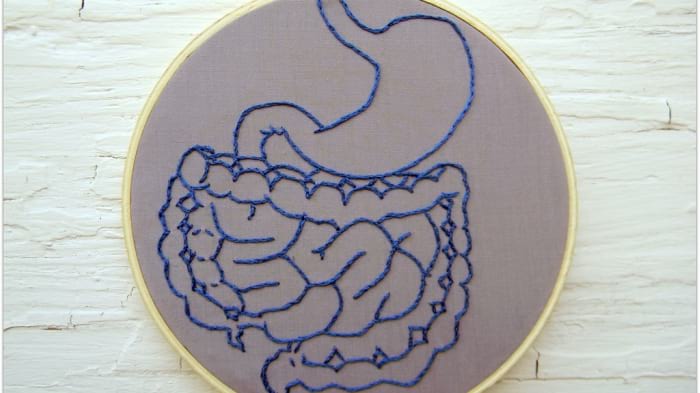
The gut flora rapidly changes with the diet, so while there is no overnight fix to a damaged digestive system, a consistently good diet full of nutrient-dense, gut-healing foods can yield good results in a short span of time.
There are certain compounds in foods that the gut really thrives on – amino acids, collagen, and probiotics to name a few. Choosing foods rich with these compounds can help heal the intestinal lining, increase the good bacteria in the gut, enhance the absorption rate of nutrients we take in, and so much more.
If you’re looking to heal the digestive system, these are the most important foods to start chowing down on daily.
Read more in our gut health series!
5 Key Signs You Have An Unhealthy, Leaky Gut
The 10 Worst Foods For Your Gut Health
1. Bone broth
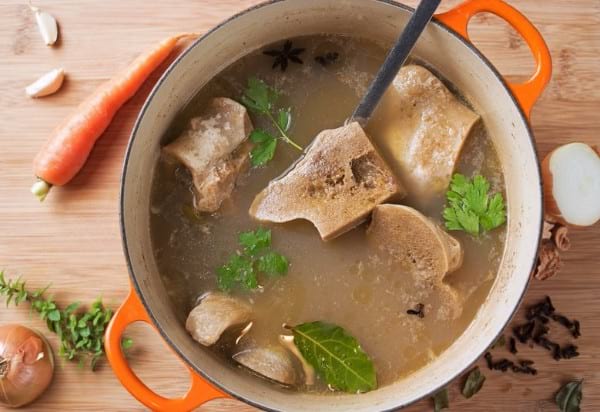
Bone broth is the ultimate gut-healing powerhouse. There’s evidence behind why chicken soup is always recommended for a cold, and it’s not the chicken or the veggies (though they are both good parts of a gut healing protocol).
It’s the broth that does it. Remember – not all broth is created equal. It’s the individual components of a good bone broth that give it its healing abilities including amino acids glutamine, glycine, arginine, and proline, collagen peptides, and gelatine.
Overall, bone broth is very easy for the body to digest, plus it’s rich with vitamins and minerals for overall good health.
Collagen peptides & gelatine. Collagen is an important building block of the gut. There are three types of collagen, and collagen III is abundant in the intestinal walls, so it’s no surprise that it’s intake impacts the health of the gut and digestive system.
Some collagen peptides actually serve as a prebiotic – an important part of the functioning of probiotics in the gut, increasing colonies and motility of those present. Those collagen peptides are fermented by one of the (good) bacteria present – Bifiolobacteria.
Gelatine (collagen that gels, basically) has anti-inflammatory effects (1), and we understand that managing inflammation can aid in repairing the intestinal lining and reduce further damage.
Finally, research shows that people with IBS experience decrease of serum concentrations of collagen, so supplementing with it can reduce inflammation (2).
Bone broth is a complete protein. This means it contains all essential amino acids which are crucial to good gut health. One of the key amino acids – glutamine – is vital to the intestinal barrier, and a lack of glutamine could result in deterioration (3).
Specific amino acids can also be used as therapeutic treatment for the gut, including glutamine, glutamate, arginine, glycine, lysine, threonine, and sulfur-containing amino acids, which all have potential to positively impact gut integrity, growth, and health (4).
These help seal the gut and maintain good flora while keeping out toxins and undigested food, leading to an improved immune system.
How to make and use bone broth. You can make your own bone broth at home by simmering the bones in water with veggie scraps.
Make sure to use bones from grass-fed, pasture-raised, or wild-caught animals because these are the most nutritious sources. You can also make it in the slow cooker or the Instant Pot.
If your bone broth gels as it cools, you’ve made a very collagen-rich bone broth that will be great for gut health! You can also purchase bone broth online or at the store. You can sip on it plain, blend it into smoothies, or use it as a braising liquid.
If you want to boost collagen intake further, consider using collagen peptides as a supplement. It’s tasteless and easily blends into coffee, tea, and water.
2. Fermented foods

Fermented foods are a no-brainer when it comes to gut health. Besides a good probiotic supplement – and in addition to one – these are the probiotic powerhouse we’re after!
Plus, fermented foods are simple and inexpensive to make at home, so it’s worth learning the art. Fermented foods are simply foods that are left out to sit and collect good bacteria, meaning the process is pretty hands-off.
The natural means of preservation transforms the carbohydrates and sugar present in the food into food compounds that boost good bacteria in the gut, which is where the tangy flavor of foods like sauerkraut and pickles come from.
Probiotics are the gut’s best friend. Seriously. Inside and outside of the gut, supplementing with probiotics or probiotic-rich foods can improve immunity, reduce symptoms of food intolerance and allergies in individuals, reduce cancer risk, and make nutrients of food more bioavailable – one of the most pervasive symptoms of leaky gut (5).
For people whose digestive tract is particularly under attack, particularly those suffering from irritable bowel syndrome, probiotic intake can be as effective as prescription drugs (6).
Overall, there is evidence that fermented foods and probiotic intake are good at repairing the gut and balancing intestinal pH with their organic acids.
Sources of fermented foods. There are SO many fun foods and recipes to choose from! First, it’s important to note that if you’re purchasing fermented vegetables at the store, you have to look for raw, unpasteurized products.
This includes kimchi, sauerkraut, pickles, and any other vegetable product. The kraut you get in a can does not contain the same beneficial bacteria. You can also purchase raw, organic kombucha.
Making these foods at home is a simple process that requires nothing more than veggies, salt, water, and spices. You don’t even need a starter culture. For kombucha, you can purchase a SCOBY online or ask around if you have friends who brew. Then, all you need is a large jar to brew, organic cane sugar, and tea.
How much do I need? Fermented foods should be started at a lower dose if you’re not accustomed to consuming them. Most fermented foods are meant to be eaten as a condiment, so begin with a few tablespoons, working your way up to 1/4-1/2 cup.
For kombucha, begin with 1/2 cup and work up to a full cup per day for optimal gut health.
3. Coconut products

Coconut products of all types are a staple on the autoimmune protocol for a reason! Coconut oil is very easy on the digestive system unlike refined oils derived from vegetable sources, thus making it a great choice for cooking and raw consumption.
You can easily sneak coconut oil into the diet with the amount of products made from coconut for healing the digestive system. Plus, it’s allergen-friendly for people who are allergic to nuts.
Good source of medium-chain fatty acids. Stacked up against other fatty acids, MCFAs are very easy to digest lending themselves well to improved digestive health and gut integrity, reducing the risk of maldigestion.
MCFA’s also lend the pancreas a helping hand, and can help with gallbladder disease. Moreover, many people without a gallbladder whose digestion is compromised could benefit from supplementing with coconut.
It’s anti-inflammatory. Research has shown coconut oil to be a strong anti-inflammatory food, reducing arthritis symptoms and flares (7). We understand the link between inflammation and leaky gut is strong, so addressing inflammation will lead to improved gut integrity.
Lauric acid. This is an important compound linked to reducing candida, fighting bacteria, and overall decreasing risk of overgrowth while also preventing stomach ulcers and ulcerative colitis.
Lauric acid supplementation has been proven to release cholecystokinin – which causes the release of digestive enzymes and bile, smoothing digestion (8).
Many people believe they produce too much stomach acid, but in an individual with leaky gut, regulating this process is important, and digestive enzyme therapy in and of itself can be a very healing approach.
Coconut products you should be eating. Don’t draw the line at coconut oil! While this is a great oil good for both raw consumption and cooking due to its high smoke point, there are so many other coconut products to enjoy.
Using coconut flour as a grain-free flour replacement adds fibre and healthy fats to the diet. Replacing sugar with coconut sugar or nectar is better for blood sugar regulation.
You can also use coconut manna or butter in recipes you would generally use nut butter in, shredded or desiccated coconut as a snack or baking ingredient, and coconut water as a natural electrolyte replenishing drink.
4. Raw, cultured dairy
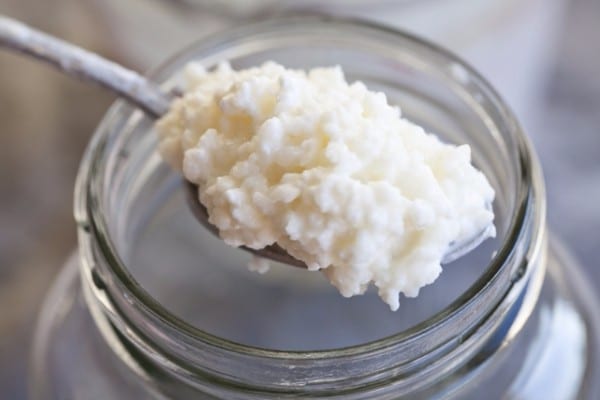
To continue on with fermented foods, fermented or cultured dairy products can be great for the gut. While eliminating dairy altogether may be a part of the initial gut-healing protocol, later on, reintroducing it can have loads of benefits.
Conventional dairy products are inherently bad for the gut, but what happens when you add some good bacteria to the mix? Nothing short of magic. Raw, cultured dairy is easier to digest and tends to interfere less with lactose intolerance or sensitivity.
Many people who can’t handle standard dairy can tolerate cultured dairy very well due to the bacteria eating up the milk sugar (lactose).
Lactic acid producing bacteria. Lactobacillus and Streptococcus – two strains of bacteria found in yoghurt – are associated with positive effects in gastrointestinal disorders including lactose intolerance, constipation, diarrheal diseases, colon cancer, inflammatory bowel disease, Helicobacter pylori infection, and allergies (9).
These cultures also synthesis B vitamins, enriching the final product naturally (10). The same benefits hold true for kefir – a fermented yoghurt drink.
Quality cheese works. While cheese can get a bad reputation, it’s only because most of it is derived from milk taken from conventionally raised cows, changing its nutrition entirely.
Studies show that cultured cheese has immunomodulating effects, simply meaning that bacteria strains such as Bifidobacterium bifidum, Lactobacillus acidophilus and L. paracasei can treat disease in the gut by suppressing an immune response (11).
Choosing fermented dairy products. When choosing a healthy product, look at the ingredients for the presence of the strains of bacteria mentioned above. Seek out raw dairy if it is legal in your state/country.
You can often find it at food coops, health food stores, and local butchers/farms. Moreover, it’s best to source products that are organic and produced from grass-fed cows.
Making yoghurt and kefir at home is simple. You can purchase a yoghurt starter or kefir grains, and all you need is some milk and patience after that!
You can also make cultured coconut products if you don’t do dairy by following the same principles and using coconut milk instead.
5. Sprouted seeds
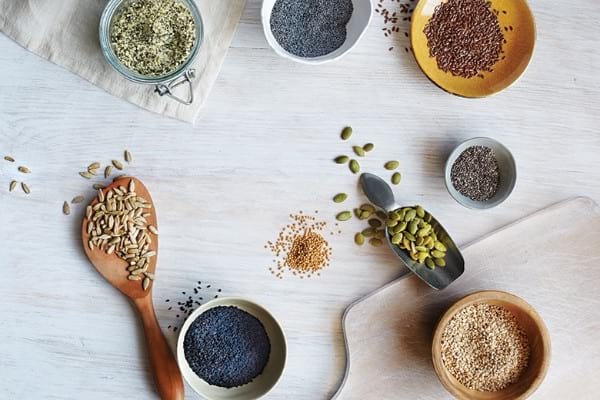
Seeds are one of those foods whose nutrition depends on you. A standard seed is less nutritious than a sprouted seed. The protein content is lower, starch is less available, anti-nutrients are present, and they’re more difficult to digest (16).
When it comes to healing the gut, we want foods that are easy for the digestive system to process, and we want to make sure they aren’t inhibiting the body’s ability to absorb any other important vitamins and minerals.
Decrease the presence of anti-nutrients. Anti-nutrients are exactly what they sound like. An overload of them makes it more likely that the nutrients we take in from other foods and the food containing anti-nutrients won’t be absorbed.
We know many problems that arise from gut permeability are due to malnutrition because a compromised digestive system is already having trouble taking in those nutrients. Don’t exacerbate the problem with unsoaked nuts, seeds, and grains which contain phytic acid.
Watch out for enzyme inhibitors. This is another antinutrient that impact digestion, and they can cause stomach upset and protein deficiency. They can also cause allergic reactions – another symptom we can often trace back to a healthy or unhealthy digestive system.
Lectins and saponins. Like with grains, we see a concentration of these anti-nutrients in unsoaked seeds and nuts. They’re a big contributor to leaky gut because they are resistant to digestion.
Subsequently, they can enter the blood and elicit an immune response which is one of the reasons why nuts and seeds are eliminated on the autoimmune protocol.
How to soak and sprout your nuts and seeds. So, let’s fix the problem! Nuts and seeds are often seen as a healthy ingredient or snack, but you have to put in the prep work to optimize their nutrition and digestive properties.
Start with a raw nut or seed, and start with the soaking process. You can soak them submerged in water for anywhere from 5-48 hours (watching out for any mould). If you soak for longer than 12 hours, make sure to rinse them and replace the water.
Store soaked nuts and seeds in the refrigerator. If you want to sprout them – which can reduce phytic acid content by up to 70% – strain and leave them in a shallow bowl, keeping the environment moist.
They should begin to sprout within 3-24 hours. You can also purchase soaked and activated seeds and nuts online. I recommend Go Raw sprouted pumpkin seeds.
6. Wild-caught seafood

While farm-raised seafood is one of the most problematic foods for gut health, wild-caught fish is a whole ‘nother story. Rich in vitamins, minerals, protein, and omega-3 fatty acids, eating seafood three times per week is recommended for any healthy, omnivore’s diet.
This can lead to balancing out your fatty acid ratio, improving gut health without need for supplementation with fish oil.
Fatty acids are anti-inflammatory. The omega-3 to omega-6 fatty acid balance is a marker of overall health, and getting that balance as close to 1:1 as possible can reduce inflammation and decrease risk of disease stemming from inflammation which includes many autoimmune diseases linked to gut health including IBS and arthritis (14).
A diet rich in omega-3s impact the gut microbiota. We want that good bacteria to thrive, and research shows that a diet rich in omega-3 fatty acids significantly changes the gut microbiota (15).
Sourcing quality fish. It’s crucial to source sustainable fish and reduce mercury intake by choosing seafood with low mercury content such as salmon, bass, oysters, scallops, shrimp, lobster, halibut, cod, and trout.
Mercury poisoning is a surefire recipe for leaky gut, so don’t overdo it on mackerel, albacore tuna, yellowfin tuna, and grouper. Always choose wild-caught fish whether you purchase fresh fish or tinned fish.
It’s also important to note that canned options are much more budget-friendly and just as nutritious! Wild-caught sardines are a super food, and one of the cheapest ways to add more seafood to your diet. Plus, they’re sustainable.
7. Butter & ghee

When someone asks if you want butter on that, the answer is always yes. Butter is objectively delicious, enhancing the flavor of nearly any food from plain steamed veggies to coffee.
Butter and its clarified counterpart – ghee – are both fantastic sources of fat, and like seafood, butter derived from grass-fed cows is a tasty way to boost omega-3 fatty acids, producing the same gut-friendly benefits.
It’s high in vitamin A. Intestinal permeability or leaky gut makes it more likely that you’ll be deficient in vitamin A, so finding more animal food sources that you can consume it in is important.
CLA! Why are we so excited about CLAs or conjugated linoleic acid? Well, the verdict is still out, but research leads us to believe that this acid – found in grass-fed beef and ghee – can reduce inflammation, linking it to better gut health.
Bonus: it’s also promising as a component of healthy weight loss.
Butter and ghee contain butyric acid. What’s with all the acids? Our bodies really rely on these, but butyric acid can be tough to get if you’re not eating butter or ghee.
It has anti-inflammatory properties and can be especially beneficial to those with gastrointestinal disorders such as OBS or Crohn’s disease. it may also support healthy insulin levels (17).
Butter it up! Grass-fed butter is the best choice, so choose a reputable brand like Kerrygold Irish butter or Vital Farms butter.
If you don’t tolerate dairy well, choosing ghee (clarified butter) can help not further digestive distress. The clarification process helps break down the lactose, reducing it to nearly none.
You can purchase ghee online, or make it at home by simply simmering down the butter until it’s a golden brown – but not burnt! Ghee is also better for cooking as it has a much higher smoke point, making it more versatile and easy to use overall.
8. Organ meats (offal)

One of the most important components of good digestion is how well the liver functions. After all, it is our body’s detox organ, and optimal processing is key.
Unsurprisingly, eating liver is great for promoting good liver health, so we can see the benefits of regular offal consumption in the gut. Offal is a powerhouse of nutrients with sodium, phosphorous and iron, and contains higher amounts of Vitamins A and C.
It even packs in some hard-to-get vitamin D.
How good liver health impacts digestion. The liver is a very good filter. It metabolizes, alters, and directs each substance that passes through it on to the digestive system.
When our liver is functioning optimally, it’s going to turn toxic substances into less dangerous compounds and chooses to send them elsewhere, saving your digestive system some trouble.
It’s a highly bioavailable form of iron. Many people are iron-deficient or anemic which is bad news for the gut. Iron is very important for bacteria, and good iron intake can shift the microbial composition of the gut positively (12).
It’s a good source of vitamin A. Vitamin A is a powerful antioxidant which can reduce inflammation. It’s important to get vitamin A from real food sources, as synthetic vitamin A doesn’t work the same way in the body, thus not providing the same anti-inflammatory benefits. Vitamin A supplementation can also improve immunity – particularly in the case of diarrhea (13).
Learning to love liver. Okay, so there are a lot of folks who wouldn’t dream of touching offal. When it comes to animal protein, though, it is hands down one of the most nutrient-dense meats on the planet – if not the most!
As with all meats, it’s very important to choose organs from grass-fed or pasture-raised animals. Otherwise, the nutrition simply isn’t there. One of the easiest ways to get accustomed to eating liver is hiding it.
Use a food processor to blend it into ground meat, and add some bacon to cut back on the flavor even more. Make burgers, meatloaf, or meatballs with it for your daily dose of hidden liver.
Pin it for later from here
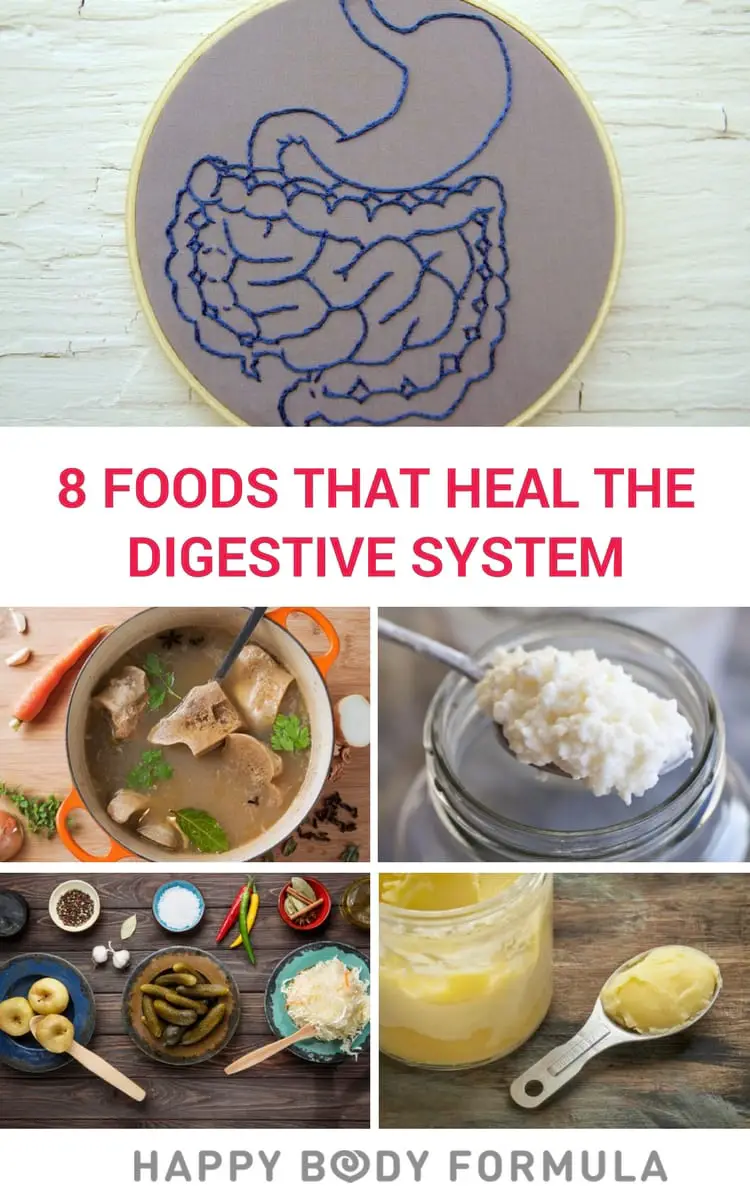
Sources:
1. Frasca, Giuseppina, et al. “Gelatin Tannate Reduces the Proinflammatory Effects of Lipopolysaccharide in Human Intestinal Epithelial Cells.” Clinical and Experimental Gastroenterology, Dove Medical Press, 8 May 2012, www.ncbi.nlm.nih.gov/pmc/articles/PMC3358810/.
2. Koutroubakis, I E, et al. “Serum Laminin and Collagen IV in Inflammatory Bowel Disease.”Journal of Clinical Pathology., U.S. National Library of Medicine, Nov. 2003, www.ncbi.nlm.nih.gov/pubmed/14600124.
3. Van Der Hulst, R R, et al. “Glutamine: an Essential Amino Acid for the Gut.” Nutrition (Burbank, Los Angeles County, Calif.)., U.S. National Library of Medicine, 1996, www.ncbi.nlm.nih.gov/pubmed/8974125.
4. Wang, W. W., et al. “Amino Acids and Gut Function.” SpringerLink, Springer Vienna, 1 Aug. 2008, link.springer.com/article/10.1007/s00726-008-0152-4.
5. Parvez, S., et al. “Probiotics and Their Fermented Food Products Are Beneficial for Health.”Journal of Applied Microbiology, Blackwell Publishing Ltd, 5 Apr. 2006, onlinelibrary.wiley.com/doi/10.1111/j.1365-2672.2006.02963.x/full.
6. Fooks, L. J., and G. R. Gibson. “Probiotics as Modulators of the Gut Flora | British Journal of Nutrition.” Cambridge Core, Cambridge University Press, 1 Mar. 2007, www.cambridge.org/core/journals/british-journal-of-nutrition/article/probiotics-as-modulators-of-the-gut-flora/0ECB99C9BCC4A6217AA70A51471E3BBA.
7. Vysakh, A, et al. “Polyphenolics Isolated from Virgin Coconut Oil Inhibits Adjuvant Induced Arthritis in Rats through Antioxidant and Anti-Inflammatory Action.” International Immunopharmacology., U.S. National Library of Medicine, May 2014, www.ncbi.nlm.nih.gov/pubmed/24613207?dopt=Abstract.
8. Little, Tanya J., et al. “Dose-Related Effects of Lauric Acid on Antropyloroduodenal Motility, Gastrointestinal Hormone Release, Appetite, and Energy Intake in Healthy Men.”American Journal of Physiology – Regulatory, Integrative and Comparative Physiology, American Physiological Society, 1 Oct. 2005, ajpregu.physiology.org/content/289/4/R1090.short.
9. Adolfsson, Oskar. “Yogurt and Gut Function.” The American Journal of Clinical Nutrition, American Society for Clinical Nutrition, 1 Aug. 2004, ajcn.nutrition.org/content/80/2/245.short.
10. Khem, Shahani M. “Nutritional and Healthful Aspects of Cultured and Culture-Containing Dairy Foods1.” Journal of Dairy Science, Elsevier, 26 Apr. 2010, www.sciencedirect.com/science/article/pii/S0022030279834815.
11. Kau, Andrew L. “Gut Mucosal Immunomodulation by Probiotic Fresh Cheese.” International Dairy Journal, Elsevier, 20 Jan. 2004, www.sciencedirect.com/science/article/pii/S0958694603002607.
12. Kau, Andrew L., et al. “Human Nutrition, the Gut Microbiome, and Immune System: Envisioning the Future.” Nature, U.S. National Library of Medicine, 15 June 2011, www.ncbi.nlm.nih.gov/pmc/articles/PMC3298082/.
13. Quitian, H, et al. “[Cost-Effectiveness Analysis (CEA) Regarding Vitamin A in Children Aged Less than 5 Years-Old in Colombia].” Revista De Salud Publica (Bogota, Colombia)., U.S. National Library of Medicine, 2014, www.ncbi.nlm.nih.gov/pubmed/25521955.
14. Wall, Rebecca, et al. “Fatty Acids from Fish: the Anti?Inflammatory Potential of Long?Chain Omega?3 Fatty Acids.” Nutrition Reviews, Blackwell Publishing Inc, 28 Apr. 2010, onlinelibrary.wiley.com/doi/10.1111/j.1753-4887.2010.00287.x/full.
15. Noriega, Blanca S., et al. “Understanding the Impact of Omega-3 Rich Diet on the Gut Microbiota.” Case Reports in Medicine, Hindawi Publishing Corporation, 14 Mar. 2016, www.ncbi.nlm.nih.gov/pmc/articles/PMC4808672/.
16. Chavan, J K, and S S Kadam. “Nutritional Improvement of Cereals by Sprouting.” Critical Reviews in Food Science and Nutrition., U.S. National Library of Medicine, 1989, www.ncbi.nlm.nih.gov/pubmed/2692609.
17. Gao, Zhanguo, et al. “Butyrate Improves Insulin Sensitivity and Increases Energy Expenditure in Mice.” Diabetes, American Diabetes Association, 1 July 2009, diabetes.diabetesjournals.org/content/58/7/1509.long.
Music, mountains, dogs, travel, food and friends.
